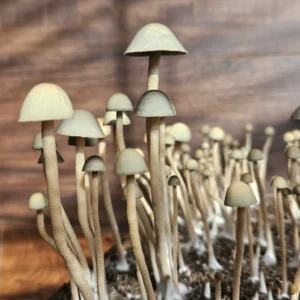This line of genetics was collected by Chan Chandra on July 19, 2024, in Xico Viejo, Veracruz, from a spot he affectionately calls “Liquid Amber”. The name comes from the sweetgum trees (Liquidambar styraciflua) that grow throughout the area. These tall, fragrant trees are native to the region and known for their star-shaped leaves and resinous sap (liquid amber), which has been used in traditional medicine and ceremony.
The name feels especially fitting, as this variety has a beautiful glow, particularly when young. The pins are tall and slender with a warm amber hue and a creamy ring around the cap edge. As they mature, the caps lighten from the outer rim inward, leaving a rich amber center. Fruits often grow in clusters with smaller caps and long, graceful stems, giving them a delicate but commanding presence.
What’s included: Each order includes 1-3 prints, carefully wrapped in sterilized foil. Prints can last several years if stored in a dark, dry, and cool location such as your fridge.
Bundle & Save: This variety is also available in the 6 Pack Panaeolus Spore Prints Bundle Deal. Buy any 5 Panaeolus prints and get the 6th free!
Satisfaction Guarantee: I care about your happiness. If you’re not satisfied for any reason, just email me at support@panaeoluscoop.com and I’ll make it right.
$20.00
Genus: Panaeolus
Species: P. cyanescens (aka Pan cyan, Copelandia, Blue Meanie)
Strain Origin: Xico Viejo, Veracruz
Climate: Tropical and subtropical
Habitat: Thrives in nutrient-rich soil, commonly found in pastures, grasslands, and areas fertilized by livestock manure.
Temp: 77°–83°F (25–28°C)
Relative Humidity: 86%–92%
Cap: Small to medium sized (1.5–4 cm diameter), rounded or bell-shaped. Caps usually start out a deep chestnut brown and fade to a pale cream or grayish color as they mature (hygrophanous).
Stem: Slender, delicate, and typically between 7–12 cm long. Pale cream or white in color, and bruises blue easily when handled.
Gills: Dark, mottled greyish-black, sometimes appearing speckled due to uneven spore distribution. Gills are tightly packed and attached directly to the stem.
Spores: Jet black, smooth, and elliptical in shape. Spores mature quickly, often leaving dense prints. Basidia typically produce four spores each (tetrasporic). Occasionally, natural mutations result in red spores — a trait that, once established, can become stable within a few generations.
Growth Characteristics: Fast growing with delicate, tomentose mycelium that is typically soft white and semi-translucent on grains. Colonizes quickly and usually begins pinning within 7–8 days.
Notes: Thrives in environments with stable temperatures, balanced humidity, and consistent airflow.
Potency: Psilocybin content typically ranges between 2%–4%.
There are no reviews yet. Be the first to write one!
You must be logged in to submit a review.

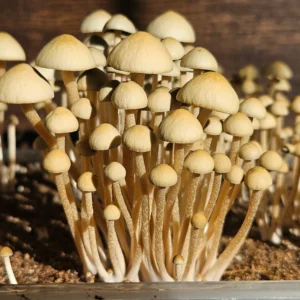
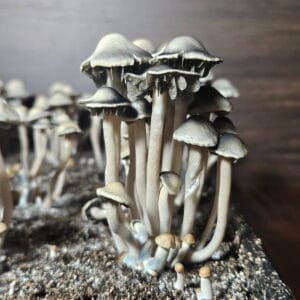
 Sold Out
Sold Out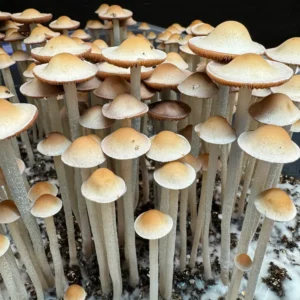
 Sold Out
Sold Out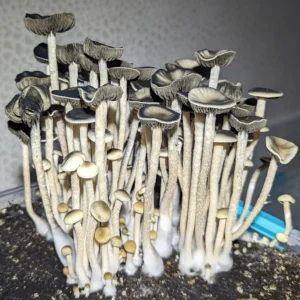 Sold Out
Sold Out
